Did you know that watermelon is actually considered both a vegetable and a fruit? Not only are watermelons delicious and sweet, but they can add an extra burst of vitamins to your summertime eating plan. But with the right timing, you can also have some amazing melon to show for all of your hard work! Planting watermelon seeds at the correct time in spring or summer is key for getting a successful harvest. So let’s dive into when you should get started planting watermelon seeds so you don’t miss any prime growing time!
The Most Delicious Watermelon Varieties
When it comes to summer fruits, nothing says “sunny days ahead” like a juicy watermelon. But did you know that there are actually many different types of delicious watermelons out there? Here’s a look at some of the most popular varieties, and what makes them unique. [1]
Charleston Gray Watermelon
The Charleston Gray is one of the most widely grown watermelons in the United States. It has a classic round shape and bright green skin with dark gray-green stripes. Its sweet, light-red flesh makes it perfect for eating fresh on its own or in fruit salads.

Crimson Sweet Watermelon
The Crimson Sweet Watermelon has a slightly oblong shape and a glossy dark green rind. It is juicy, crunchy, and incredibly sweet, with bright red flesh that often has yellow patches throughout. This variety of watermelon is perfect for canning or making refreshing summer drinks.
Sugar Baby Watermelon
The Sugar Baby Watermelon is an old-fashioned favorite. Its round shape makes it easy to spot, and its tough green exterior hides a sweet, red flesh. This type of watermelon has a very small seed cavity, making it ideal for slicing and eating fresh.
Yellow Doll Watermelon
The Yellow Doll Watermelon is an eye-catching variety thanks to its bright yellow skin. It has a light flavor that makes it perfect for adding to salads and other dishes. The flesh is a pale yellow color that deepens as the watermelon ripens. [2]
What Are the Most Favorable Regions for Growing Watermelons?
Watermelons are a warm-weather crop and need a long growing season in order to reach optimal maturity. Those who plan to grow watermelons must research the best conditions for their specific region. Depending on the variety of watermelon chosen, different parts of the country may offer more ideal climates. [3]
The best regions for growing watermelons are typically within the Southern United States. This area includes states such as Florida, Alabama, Georgia and Mississippi. These states provide a warm climate that is ideal for growing watermelons with a long growing season.
The Pacific Northwest is generally not favorable for growing watermelons due to shorter summers and cooler temperatures. This region may have limited success with some varieties of watermelon, but it is best suited to other warm-weather crops.
When considering the best regions for growing watermelons, potential growers should also consider the amount of rainfall their region receives and the length of its summers. In regions with a lot of rainfall, extra care must be taken to ensure that soil drainage is adequate. Additionally, it may be beneficial to choose varieties that have shorter maturation periods in order to maximize success within the region’s growing season. [4]
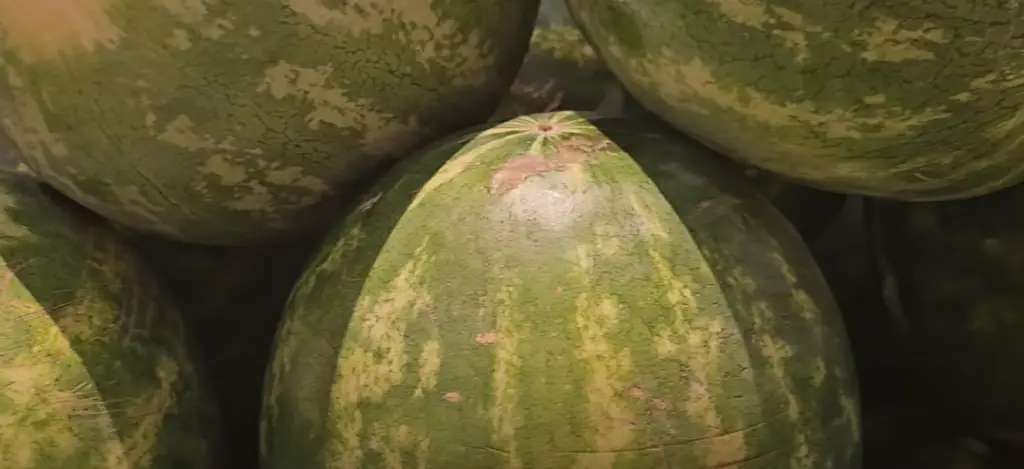
What are the Difficulties of Growing Watermelons?
When it comes to growing watermelons, there are several factors that can affect their success. The right climate, soil quality and care are all key components of a successful watermelon crop. Here are some potential issues that can arise when attempting to grow watermelons:
Incorrect Soil Conditions
Watermelons require well-drained, nutrient-rich soil in order to thrive. If the soil is not properly aerated or fails to retain enough moisture, watermelons can suffer from root rot and other diseases. Additionally, if the pH of the soil is too low or too high, watermelon plants may struggle to absorb essential nutrients.
Too Much Heat or Cold
Watermelons grow best in warm temperatures, but they are susceptible to both extreme heat and cold. If the temperature goes too high, photosynthesis can be inhibited, leading to stunted growth and decreased yields. Conversely, if temperatures drop too low watermelon plants may suffer from frost damage.
Poor Sun Exposure
Watermelons require plenty of sunlight in order to photosynthesize and grow. If the plants do not receive enough sunlight, they may fail to develop properly or even die off. Additionally, when watermelon plants are exposed to intense midday sun, they can suffer from heat stress and dehydration.
Pest Infestations
Pests and diseases can wreak havoc on watermelon plants, leading to stunted growth or poor fruit quality. Common pests that affect watermelons include cucumber beetles, aphids, squash bugs, spider mites and whiteflies. Controlling these pests is essential for a successful crop.
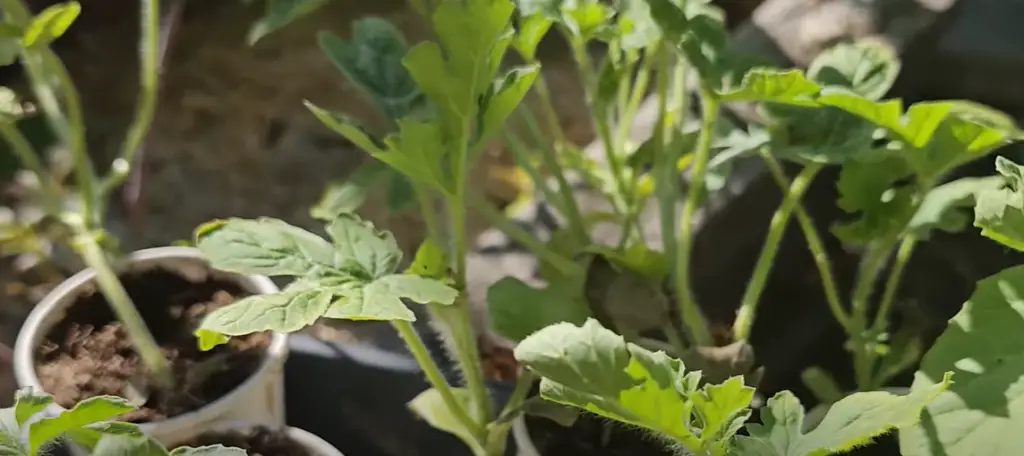
Lack of Proper Care
Watermelons need regular irrigation and fertilization in order to reach their full potential. If the plants are not watered regularly, their growth can be stunted and their yields will suffer. Additionally, if fertilizers are applied incorrectly or at the wrong time of year, watermelon plants may become nutrient deficient and fail to thrive. [5]
When to Plant Watermelon Seeds?
When it comes to planting watermelon seeds, timing is everything. Planting them too early can subject your plants to frost, while waiting too long can cause them to struggle when the summer heat arrives. The best time to plant watermelon seeds is usually around two weeks after the last expected spring frost in your area. [6]
Watermelons require plenty of warm weather and sunshine to mature properly. So, when deciding when to plant your watermelon seeds, you should consider the average last frost date in your area. In general, most regions have a last frost date of around May 15th or later.
When planting your watermelon seeds, it’s important to use soil that’s rich in nutrients like nitrogen, phosphorus, and potassium. Plant the seeds about half an inch deep and place them in groups of two to three in each hole. After planting, make sure to give your watermelon seeds enough water—about 1-2 inches per week should do the trick.
With proper care and attention, your watermelons will be ready to harvest in just a few months! [7]
How to Grow Watermelons From Seeds?
Growing watermelons from seeds is a great way to enjoy post-harvest homegrown sweet and juicy watermelons. Watermelon plants are easy to start from seed but there are some important things to keep in mind when growing them. Here’s your step-by-step guide for how to grow watermelons from seeds!
Step 1 – Preparing the Soil
You’ll need to prepare the soil for your watermelon plants before you plant them. Make sure to start with a well-draining, loamy soil that is high in organic matter. You can add compost or aged manure to the soil to help increase its fertility and aeration.
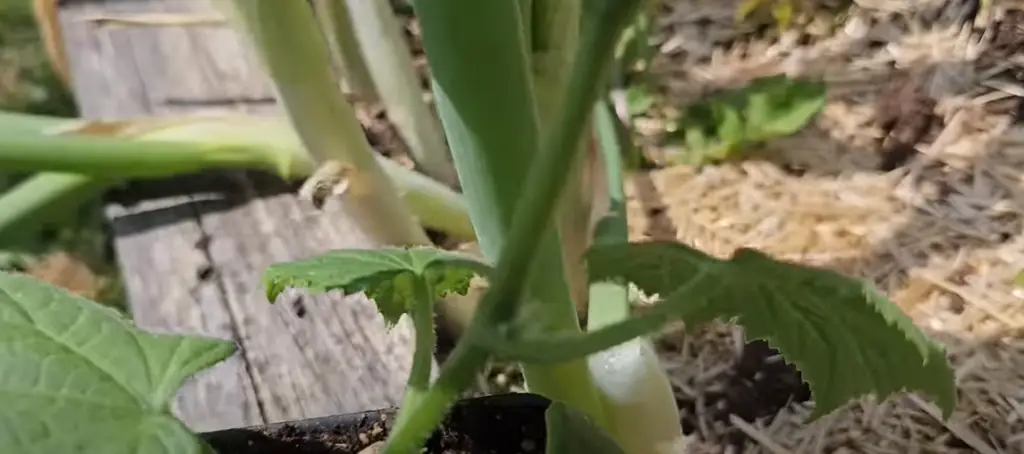
Step 2 – Planting the Seeds
When planting your watermelon seeds, make sure to space them about 12 inches apart in rows. Plant each seed at a depth of 1-2 inches and then loosely cover it with soil. Water the area lightly after planting and keep the soil moist but not soaked.
Step 3 – Growing Conditions
Watermelons require plenty of sunlight for optimal growth – so make sure to plant them in an area that receives at least 8 hours of sunlight per day. Once the plants reach about six inches tall, you can fertilize them with a balanced fertilizer like 10-10-10.
Step 4 – Harvesting
When your watermelons are ready to be harvested, you’ll know by the tendrils on the plant. They will turn brown and brittle when they’re fully ripe. To harvest your watermelon, cut the stem at least 2 inches from the melon with a sharp knife or pruning shears. [8]
Tips for Growing Watermelons
- Watermelons are a warm-weather crop so make sure to plant your seeds after the last frost of the season.
- Applying an organic mulch around your watermelon plants can help conserve moisture and keep weeds at bay.
- Keep an eye on the soil’s pH level. It should stay between 6 and 7 for optimal growth of your watermelon plants.
- Make sure to rotate your watermelons every year to help prevent disease and pests from taking hold.
- Watermelons are heavy feeders, so be sure to fertilize them regularly throughout the growing season with an organic fertilizer.
- Harvesting your watermelon at the right time is important. When the melon gives off a dull thud when tapped and the tendrils are dry, it’s ready for harvest. [9]
How to Care for Watermelons?
Watermelons are an incredibly nutritious and delicious summertime treat. However, they require some extra care to ensure they stay fresh and juicy. Here are a few tips for making sure you get the most out of your watermelon:
- Watermelons should be stored in a cool, dark place away from direct sunlight or any other source of heat. Never store watermelons in the refrigerator, as this can make them mushy and unappetizing.
- When harvesting your watermelons, be sure to choose ones that are ripe but not too ripe. You can check by pressing gently on the rind – it should feel firm, yet slightly soft when pressed.
- Before slicing your watermelon, make sure to wash the outer rind with cold water. This will help remove any dirt or bacteria on the surface.
- To keep your watermelon fresh for as long as possible, wrap it in a damp paper towel and store it in an airtight container in the refrigerator. It should last for up to two weeks this way.
- If you’re looking to enjoy the sweet and juicy flavor of a watermelon without the mess, try freezing it! Slice your watermelon into cubes and freeze in an airtight container for up to six months. When ready to eat, just add your favorite milk or smoothie ingredients for an easy breakfast treat.
- For a fun summertime snack, try cutting your watermelon into fun shapes like stars and hearts. Add some fruit skewer sticks for easy eating and you’ve got a delicious, healthy treat.
- Watermelons are also great for juicing! Start by removing the rind, then blend together with other fruits or vegetables of your choice in a blender or juicer. The juice can be stored in the refrigerator for up to three days, or frozen for later use.
- Finally, don’t forget about the seeds! Toasted watermelon seeds are a great snack and can be seasoned any way you like – try a bit of sea salt and olive oil for a savory twist. [11]
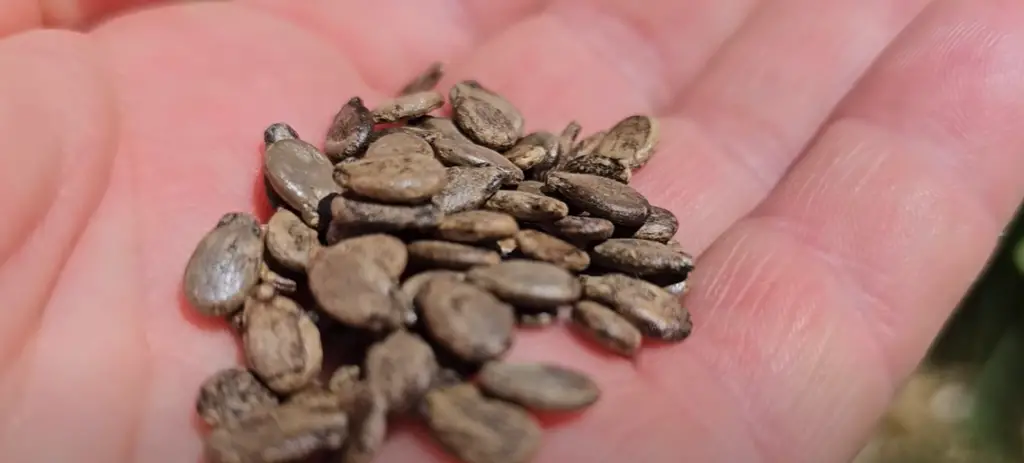
Do Watermelons Need Fertilizing?
Watermelons, like many other garden plants, need a combination of nutrients to produce high quality fruit. Fertilizers are vital for providing these nutrients and ensuring that your watermelon plants get the nourishment they need to grow healthy and strong. It’s important to know when and how to fertilize your melon plants so that you can reap the rewards of sweet, juicy watermelons.
When to fertilize?
The best time to fertilize your watermelon plants is during the early stages of growth. You should fertilize just before the plant’s fruit starts to develop, as this will give it the most benefit when it comes to ripening and growing large.
What fertilizer to use?
When choosing a fertilizer for your watermelon plants, you want to look for one that is high in nitrogen, as this will help support the plant’s growth and development. You should also make sure it has plenty of phosphorus and potassium, as these two nutrients are essential for producing good fruit.
How much fertilizer to use?
When fertilizing your watermelon plants, you should be careful not to overdo it. Too much fertilizer can damage the plant and even inhibit its growth, so you want to stick to the recommended amount listed on the package. You should also make sure that you spread the fertilizer evenly over the entire area of your garden where watermelon plants are growing.
How to fertilize?
After you’ve chosen the right type and amount of fertilizer for your watermelon plants, it’s important to apply it correctly. First, spread the fertilizer around the base of each plant. Then, make sure to give the soil a good watering so that the nutrients can be absorbed by the roots and start to work their magic! [11]
When and How to Pick Watermelons?
Watermelons are an incredibly popular summer fruit, and no backyard barbecue is complete without one. But whether you’re buying a melon for yourself or as a gift, it’s important to know when and how to pick the perfect watermelon.
Step 1: Choose the Right Size
When it comes to watermelons, size matters. Smaller melons tend to be sweeter and more flavorful, while larger ones often have lots of space for seeds and excess liquid. If you’re looking for a large fruit that will feed many people at once, opt for a melon that weighs between 10-15 pounds. If you’re looking for something small and sweet, try a 6-8 pound melon instead.
Step 2: Pick the Right Color
The best watermelons are usually a deep green on the outside with darker stripes or spots. Avoid any melons that have an overly yellow hue, as this could mean that it was picked prematurely. It’s also important to keep in mind that, unlike some other fruits, watermelons won’t ripen after they are picked.
Step 3: Check the Underbelly
The underside of a watermelon should have a yellow or cream-colored spot where it rested on the ground while it was growing. If you can’t find a spot, it could mean that the fruit was picked too early. Look for a melon that has a creamy yellow patch on its underside to ensure that you are getting a ripe and flavorful one.
Step 4: Give It a Thump
Though not very scientific, thumping your watermelon is an easy way to determine its ripeness. Pick up the melon and give it a few gentle thumps with your fingers. If it sounds hollow, then you’ve likely found a ripe watermelon! A dull sound could mean that the melon is under-ripe or overly ripe, so it’s best to avoid those.
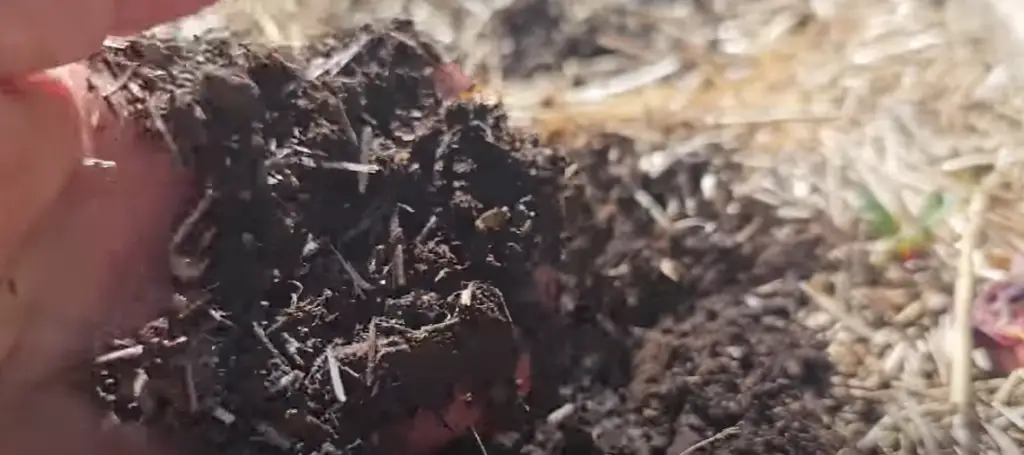
Step 5: Enjoy!
Now that you’ve chosen the perfect watermelon, it’s time to enjoy it! Cut up slices for a summer snack, blend them up in a smoothie, or simply grab a spoon and dig in – no matter how you choose to eat your melon, there’s no wrong way. [12]
FAQs
What is the best month to grow watermelon?
The best month to grow watermelon traditionally depends on the region, climate and season. In tropical climates, late spring is the ideal season for planting watermelons so that they mature in early fall; while in cooler climates, mid-summer is best for growing watermelons when it’s warm enough for them to ripen.
How long do watermelon seeds grow?
Watermelon seeds can take anywhere from three to five months to produce a mature fruit. The amount of time the process takes depends on the variety and the weather conditions in which it is grown. Generally, watermelons are planted in early spring and harvested in late summer or early fall. During this period, the plant needs plenty of sunshine and warm temperatures for optimal growth. During this time, the watermelon seeds should be kept consistently moist to stimulate germination and healthy plant growth. Once the watermelon fruit is ripe, it’s ready for picking!
Watermelons are a sweet and juicy summer treat that many of us enjoy. Not only do they taste delicious but their bright colors add a fun and festive touch to any meal. Besides being a tasty snack or side dish, watermelons also have many health benefits. They are packed with vitamins and minerals like vitamin C, lycopene, potassium, and magnesium that can help boost your immune system and promote healthy skin. Watermelons also contain antioxidants which help protect your cells from damage caused by free radicals in the body. So next time you’re feeling the summer blues, grab yourself a watermelon and stay healthy!
Do watermelon seeds need heat?
Watermelon seeds need a certain amount of heat to germinate and grow. It is best to sow watermelon seeds in warm soil that reaches at least 70°F (21°C). The ideal temperature range is between 75-90°F (24-32°C). They can be planted indoors or outdoors, but make sure the soil has been kept at the ideal temperature for several days before planting.
Watermelon seeds should be planted about 1-2 inches (3-5 cm) deep in the soil. They can also be started indoors and transferred to the garden after 4-6 weeks, or when nighttime temperatures remain above 50°F (10°C). To optimize growth, make sure to keep the soil evenly moist and fertilize with a balanced fertilizer after the first few weeks.
Watermelons also need plenty of sunlight to grow. For best results, ensure that they receive full sun for at least 8 hours per day. If planting indoors, use grow lights to provide adequate light for the duration of the growing season. Additionally, watermelons should be kept away from cold drafts and winds which can damage the delicate vines.
How many watermelons do you get from one plant?
It depends on the type of watermelon and the climate in which it is grown. Generally, you can expect one or two melons per vine.
However, if conditions are just right – ample amounts of sun, plenty of water, and adequate soil nutrition – the number of melons produced per vine can increase up to five or even more. In addition, watermelons grown in greenhouses can produce an even larger yield.
Useful Video: How to Grow Watermelons – Complete Growing Guide
Wrapping Up
Although everyone’s planting timeline and conditions differ, it is essential to remember that when planting watermelon seeds, timing is of the utmost importance. Be sure to give them enough time to absorb as much warmth as possible so that they can reach maturity. Take into account the frost-free days in your area before committing to a specific planting date. What may be a good option in one region may not be ideal for another region with harsher weather conditions. Planting at the proper time combined with using quality soil, ample amount of water and adequate fertilization can result in healthy plants with tasty fruit. So take advantage of the spring season by double-checking any seasonal restrictions and acting on this essential task right away! With knowledge and care, you’ll surely have an abundant harvest of sweet, juicy watermelons in no time.
References:
- https://gardenerspath.com/plants/fruit/best-watermelon-varieties/
- https://sowtrueseed.com/blogs/gardening/types-of-watermelons
- https://extension.okstate.edu/fact-sheets/watermelon-production-2.html
- https://hgic.clemson.edu/factsheet/watermelons/
- https://www.southernliving.com/how-to-grow-watermelon-7483166
- https://bonnieplants.com/blogs/how-to-grow/growing-watermelons
- https://www.almanac.com/plant/watermelons
- https://www.thespruce.com/how-to-grow-watermelons-from-seeds-7089825
- https://growfully.com/how-to-grow-watermelon/
- https://www.thespruce.com/how-to-grow-watermelons-1403491
- https://aggie-horticulture.tamu.edu/vegetable/wp-content/uploads/sites/10/2013/09/EHT-034.pdf
- https://kansashealthyyards.org/component/allvideoshare/video/watermelon-when-to-pick





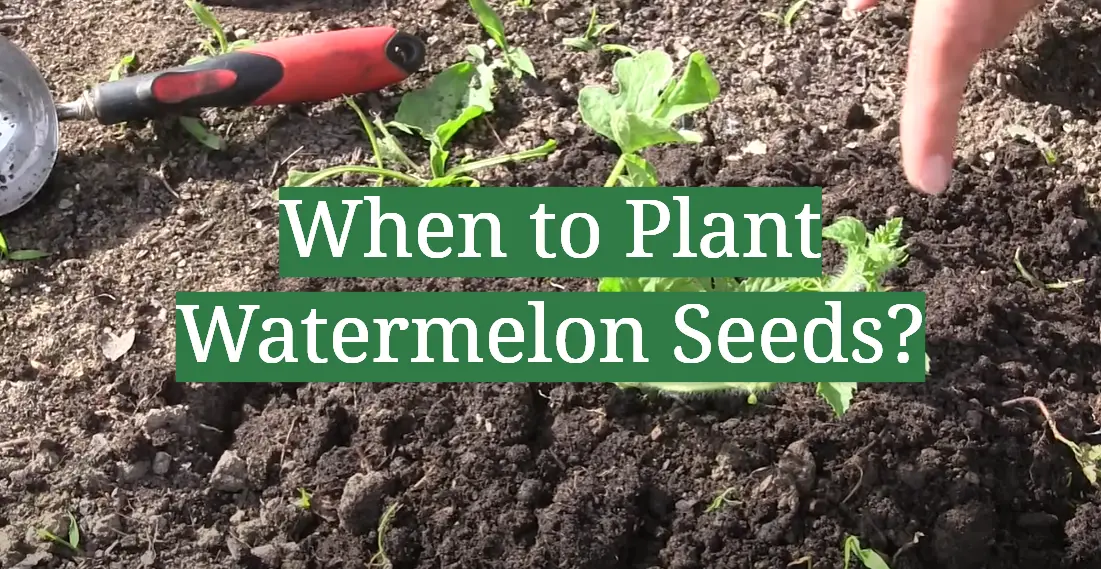


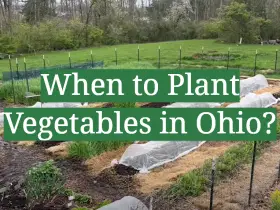

Leave a Reply
View Comments